calsfoundation@cals.org
Argenta Historic District
Listed on the National Register of Historic Places in 1993, the Argenta Historic District in downtown North Little Rock (Pulaski County) has anchored the revival of the city’s urban core. It is bounded by Broadway on the south, 9th Street on the north, Poplar Street on the east, and North Broadway on the west. The district includes 258 residential and commercial properties representing a continuum of the city’s development from the late 1880s to the 1940s, when North Little Rock grew from a muddy outpost on the Arkansas River opposite Little Rock (Pulaski County) to a primary railroad and industrial center with the second-largest population in the state.
True to its working-class roots as a city of railroad yards, cotton oil mills, factories, and cattle pens, Argenta’s architecture reflects vernacular expressions of popular styles of the period. Notable architects include Charles L. Thompson, H. Ray Burks, Guy Swaim, and John Parks Almand. Thompson designed Argenta High School (later Fourth Street Junior High) at 4th and Willow; the building was razed in 1976 during the era of urban renewal. Almand designed the First Presbyterian Church at 4th and Maple.
Architectural historian Sandra Taylor Smith authored the district’s National Register nomination. Initially, there was resistance among preservationists because so many structures had been significantly altered and neglected. Smith emphasized the Argenta neighborhood’s history and connection to the founding of North Little Rock. In 1993, the district included 172 properties in separate areas, with barely half qualifying for National Register status. In 2007, following more than a decade of investment, the district was expanded and unified with eighty-one percent of 258 properties in compliance with National Register standards. “The buildings within Argenta strongly retain their integrity of location, design, workmanship and materials,” Smith wrote in 2007. “A sense of time and place is conveyed in tree-lined streetscapes of the residential area as well as along the city’s principal commercial corridor, Main Street.”
Main Street features Classical Revival architecture at City Hall (1914–15) and the former U.S. Post Office (1932). The Street building (1895) and the Faucette-Cook building (1895) are Italianate style. Two of the oldest structures, the Argenta Drug Company building (1887) and the Vogel building (1887), are late nineteenth-century Vernacular Commercial. The Owens Funeral Company building (1928) is the only example of Spanish Revival style. Also represented on Main and Maple streets are twentieth-century Commercial Moderne and International styles.
In Argenta’s residential area, Craftsman, Dutch Colonial Revival, English Revival, Colonial Revival, Vernacular, Prairie, and Minimal Traditional styles predominate. Larger residences include the Classical Revival E. O. Manees House at 216 W. 4th St. (1895) and English Revival Owens House (1926). The Baker House at 5th and Main (1897) is the lone Queen Anne style. Constructed primarily for railroad workers, most Argenta houses are modest in size. Shotgun-style houses line the 500 block of Willow and 800 block of Orange. Developed by Twin City Bank and the Justin Matthews Company in the 1920s, Melrose Circle features fifty-two Craftsman bungalows on the site of a former cotton oil mill.
Downtown North Little Rock’s vitality declined measurably in the 1960s due to a combination of interstate construction and suburban flight. Tear-downs during urban renewal in the 1970s waged the final blow. By the early 1990s, crime and deterioration had reduced Argenta to a dangerous wasteland. Two murders in 1991 galvanized residents to form an organization that would be pivotal in the turn-around. Boosters for a Better Downtown spurred the creation of the historic district, along with establishment of the Argenta Community Development Corporation (CDC) and Main Street Argenta.
The North Little Rock History Commission hired Smith in 1991 to prepare the National Register nomination. After its approval in 1993, the North Little Rock City Council established the Historic District Commission to enforce architectural guidelines. Argenta CDC, formed in 1992, was governed by a board of residents, with Dan Scott as the first chairman and Rosemary Hamel as director. Working closely with the Historic District Commission and the city’s Community Development Agency headed by Charley Baxter, the CDC purchased and rehabilitated sixty-nine properties in Argenta. Between 1994 and 2008, residential property values rose more than 400 percent, and commercial values climbed 270 percent. Similarly, between 1996 and 2007, police calls declined by ninety percent.
The Argenta Downtown Council succeeded Main Street Argenta in 2007. Led by property owners, the council provides marketing and landscaping, as well as support for business development and safety downtown. John Gaudin and partners built Argenta Place at 301 Main St. in 2007, and City Grove town homes on Maple Street in 2008. Investors also opened Argenta Market at 521 Main in 2010.
For additional information:
Argenta Downtown Council. http://argentadc.org (accessed October 20, 2021).
Argenta News, 1993–2004. Newsletters published by the Argenta Community Development Corporation. North Little Rock History Commission, North Little Rock, Arkansas.
Bradburn, Cary. On the Opposite Shore: The Making of North Little Rock. Marceline, MO: Walsworth Publishing Co., 2004.
“Design Guidelines: A Guide to Rehabilitation & New Construction in the Argenta Historic District.” North Little Rock Historic District Commission, December 1993. North Little Rock History Commission, North Little Rock, Arkansas.
Dreher, Evelyn Elise, Carolyn Ringer, and Brad Pfau “The Story of a Neighborhood in Action, 1991–1996.” North Little Rock, AR: Argenta Community Development Corporation, 1996. On file at North Little Rock History Commission, North Little Rock, Arkansas.
Drew, Sara Ann. “A History of Argenta: The Making of a Historic District.” MA thesis, University of Arkansas at Little Rock, 2010.
MetLife Foundation Community-Police Partnership Awards, Round-Two Application Submitted by the North Little Rock Police Department, April 29, 2009. North Little Rock History Commission, North Little Rock, Arkansas.
Smith, Sandra Taylor. “Argenta Historic District.” National Register of Historic Places nomination form. On file at Arkansas Historic Preservation Program, Little Rock, Arkansas. Online at http://www.arkansaspreservation.com/National-Register-Listings/PDF/PU9777.nr.pdf (accessed October 20, 2021).
Cary Bradburn
North Little Rock History Commission
 Historic Preservation
Historic Preservation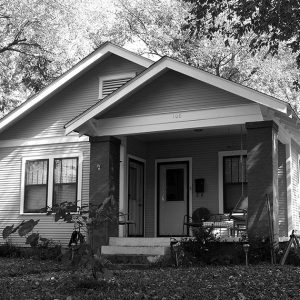 108 Melrose Circle
108 Melrose Circle 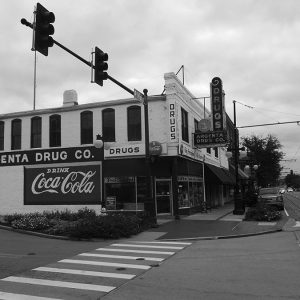 Argenta Drug Company
Argenta Drug Company 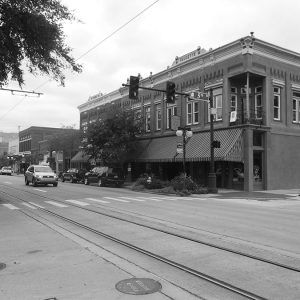 Argenta Historic District
Argenta Historic District 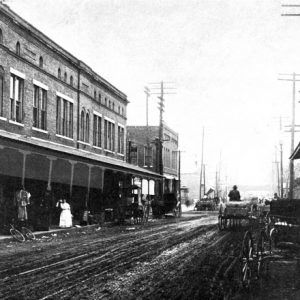 Argenta Street Scene
Argenta Street Scene 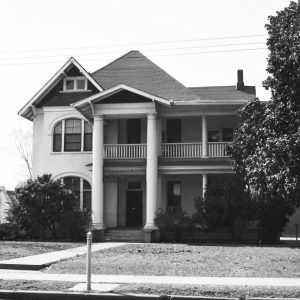 E. O. Manees Home
E. O. Manees Home 



Comments
No comments on this entry yet.